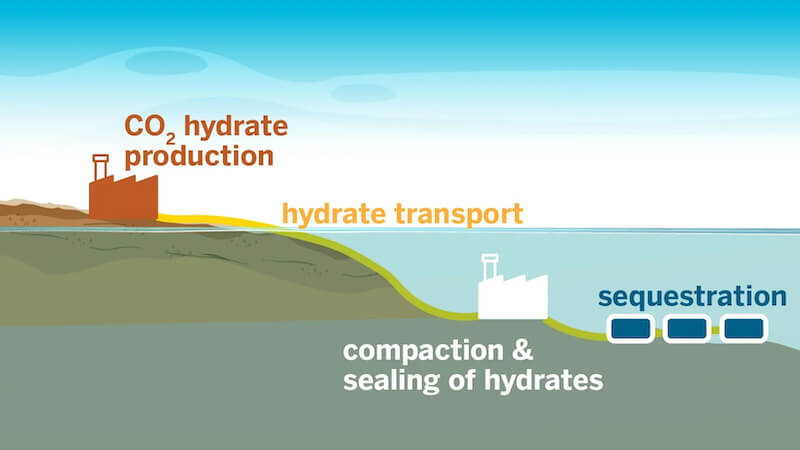
Researchers have developed a new technology to freeze CO2 and dump it in the ocean. The method is said to be more efficient and secure than comparable storage methods.
Scientists at the University of Texas at Austin have recently developed an advanced method for carbon dioxide storage. This should make it possible for the first time to convert carbon dioxide (CO2) more quickly and safely into water-like forms in order to store it in the ocean.
The method does not use chemical additives and is said to be significantly more efficient than current methods. Instead of injecting the CO2 into underground reservoirs, the research team converted it into stable, ice-like structures.
These are supposed to be stored in the ocean. The technology could therefore make a significant contribution to reducing atmospheric carbon dioxide levels and combating climate change.
In the ocean: Efficient CO2 storage eliminates common hazards
Current methods for storing carbon dioxide rely on storing CO2 in underground reservoirs. But injecting the gas into our soil poses numerous risks. These include CO2 leaks, groundwater contamination and seismic hazards. Because in many regions the geological conditions for this method are missing.
The new technology of so-called hydrate formation addresses these challenges and offers an alternative solution. By accelerating the process sixfold and eliminating the use of chemical additives, the research team made the large-scale storage of CO2 in the ocean simple and safe.
Magnesium serves as a natural catalyst
The researchers used magnesium as a catalyst for their method, which eliminates the need for chemical accelerators. This technology works smoothly with seawater and does not require complex desalination processes, ultimately making it easier to implement.
The stable thermodynamic conditions on the seabed protect the hydrates from decay, which should make storage safe and long-term possible. Governments around the world could use the method, making carbon dioxide storage accessible to all coastal states.
The rapid formation of hydrates also has potential for other applications such as desalination, gas separation and gas storage. The researchers have already filed patents for the technology and are considering setting up a start-up to commercialize it.
Also interesting:
- Building rubble as an efficient CO2 storage in the fight against climate change
- Made of sugar and metal: This catalyst can destroy CO2
- CO2 filtering: What is direct air capture?
- What exactly is CO2 and what role does it play in our atmosphere?
The post Ice-like structures: New technology freezes CO2 in the ocean by Felix Baumann appeared first on BASIC thinking. Follow us too Facebook, Twitter and Instagram.
As a Tech Industry expert, I find the concept of using ice-like structures to freeze CO2 in the ocean to be a fascinating and innovative solution to combating climate change. The ability to capture and store carbon dioxide in a natural and environmentally friendly way has the potential to significantly reduce greenhouse gas emissions and mitigate the impacts of global warming.
This new technology has the potential to revolutionize carbon capture and storage methods, providing a more sustainable and efficient way to address the growing threat of climate change. By utilizing ice-like structures to freeze CO2 in the ocean, we can not only reduce carbon emissions but also potentially reverse some of the damage already done to our planet.
I believe that continued research and development in this area will be crucial in advancing the use of ice-like structures for carbon sequestration and creating a cleaner and more sustainable future for generations to come. It is exciting to see the tech industry playing a key role in developing innovative solutions to combat climate change and protect our planet.
Credits